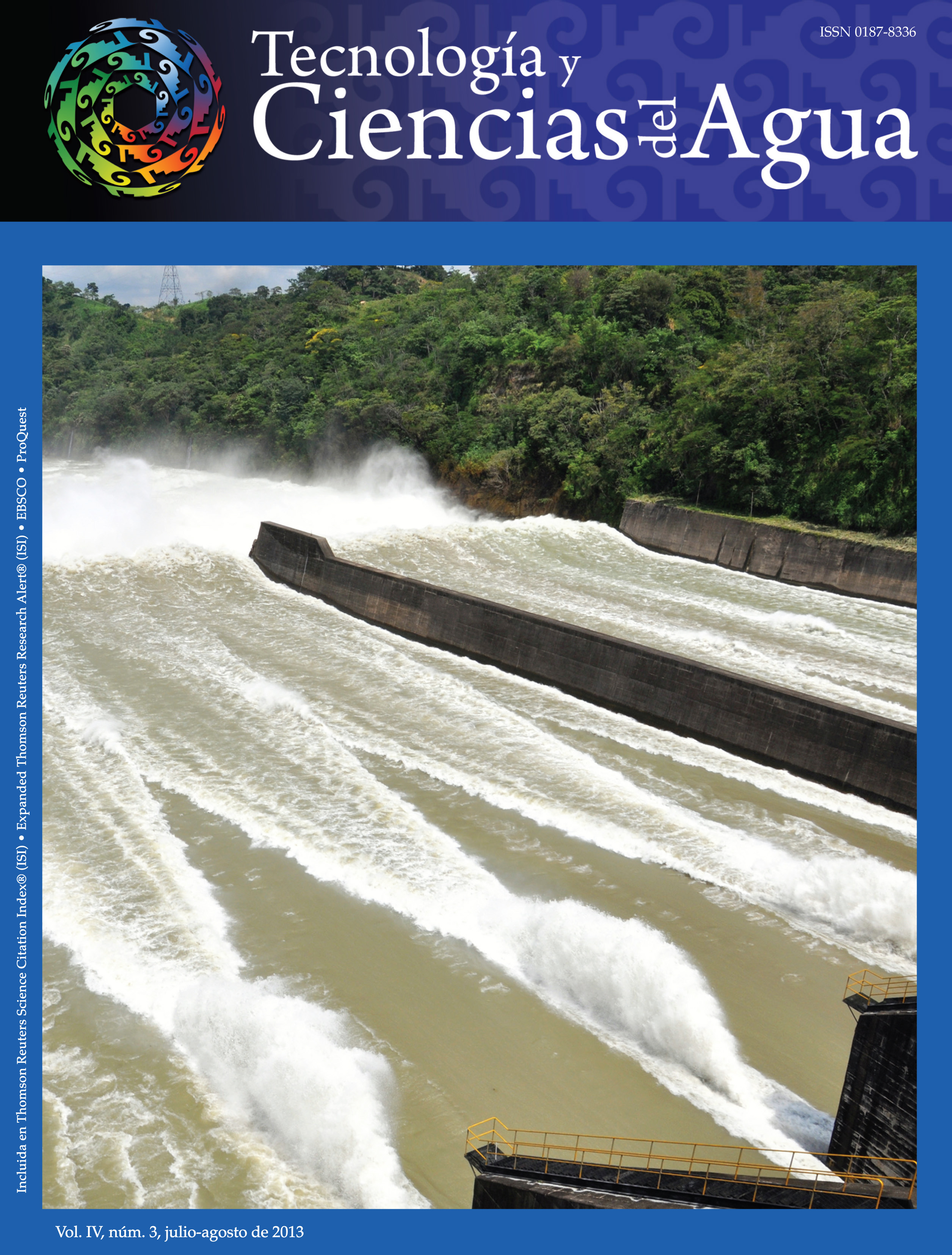Evaluation of desalination processes and their development in Mexico.
Keywords:
reverse osmosis, electrodialysis, distillation, desalination, water quality, cations, anionsAbstract
Different desalination processes exist, which are differentiate by their cost, environmental impact, the quality of the product and energy consumption. A comparison of thermal and membrane processes identified the existing technologies to desalinate seawater, the number of installed plants, the technology used, the supply source and the use of desalinated water. Thetechnical feasibility and main objective of this work was the study and comparison of thermal and membrane desalination systems with respect to production costs in USD/m3 and energy consumption in kWh/m3. Desalination systems have been in practice since 1970 with the use of
membrane systems (reverse osmosis (RO), electrodialysis (ED) and nanofiltration (NF)) and thermal systems (multiple stage distillation (MED), multiple stage flash distillation (MSF), and solar distillation (SD)). Of the 13,000 plants installed, 50% use RO, 33% use NF, 1% MSD and 4% MSF. The most common supply sources are seawater (60%) and brackish water
(22%). The beneficiaries of this desalinated water are the municipal (66%) and the industrial (23%) sectors. The type of technology that requires less energy consumption is RO, from 2 to 2.8 kWh/m3 at a cost of 0.6 USD/m3, whereas MSD and MSF technologies consume 3.4 to 4 kWh/m3 and 5 to 8 kWh/m3 at a production cost of 1.5 USD/m3 and 1.10 USD/m3, respectively. The comparison of technologies determined that energy consumption and production costs are less and production is greater with RO. Moreover, RO has significant advantages over other systems, such as not requiring phase changes, unlike MED and MSF. Reverse osmosis is the
most feasible process with regard to production, energy consumption and cost.
Downloads
Published
2013-08-03
How to Cite
Dévora-Isiordia, G. E., González-Enríquez, R., & Ruiz-Cruz, S. (2013). Evaluation of desalination processes and their development in Mexico. Tecnología Y Ciencias Del Agua, 4(3), 27–46. Retrieved from https://revistatyca.org.mx/index.php/tyca/article/view/364
Issue
Section
Articles
License
By Instituto Mexicano de Tecnología del Agua is distributed under a Creative Commons Attribution-NonCommercial-ShareAlike 4.0 International License. Based on a work at https://www.revistatyca.org.mx/. Permissions beyond what is covered by this license can be found in Editorial Policy.









